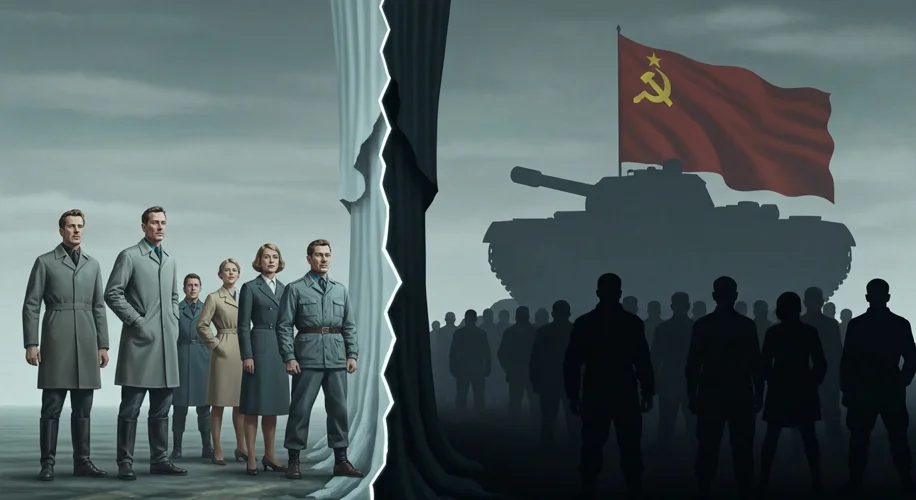The wind, sharp and biting, often carries echoes of history across the Baltic Sea and the vast plains of Eastern Europe. For centuries, these lands have been a geopolitical chessboard, where empires rose and fell, and where the destinies of nations were shaped by the ever-shifting alliances and rivalries between Nordic countries, Eastern European states, and the towering powers that cast their long shadows over the region – most notably, Russia.
Imagine the year is 1947. The ink on the post-World War II agreements is barely dry, yet a new chasm, the Iron Curtain, is being drawn. For the Nordic nations – Sweden, Norway, Denmark, Finland, and Iceland – and their Eastern European neighbors, this was not just a political divide; it was a seismic shift that would redefine their existence for nearly half a century. While Finland, bearing the heavy scars of war, found itself navigating a precarious path of neutrality, balancing its powerful neighbor with Western inclinations, its Baltic neighbors – Estonia, Latvia, and Lithuania – were forcibly absorbed into the Soviet Union. Sweden, steadfastly neutral, and Norway and Denmark, opting for NATO membership, found themselves on opposite sides of this new, ideological frontier.

The Cold War was the crucible in which many of these relationships were forged and tested. For Russia, or the Soviet Union as it was then, these regions were a vital buffer zone, a strategic backyard. For the Nordic countries, their proximity to the Soviet behemoth dictated a policy of careful diplomacy, often walking a tightrope between maintaining their independence and avoiding direct confrontation. Finland’s unique position, often referred to as “Finlandization,” exemplifies this delicate act. They maintained their democracy and market economy but were careful not to provoke Moscow, allowing Soviet influence in foreign policy decisions. This was a heavy price for sovereignty, a constant negotiation between what was desirable and what was possible.
Across the border, in what was then called Eastern Europe, the situation was starkly different. Nations like Poland, Czechoslovakia, Hungary, Romania, and Bulgaria found themselves under Soviet domination. Their economies were integrated into the Soviet bloc, their political systems modeled on Moscow’s, and their military forces aligned with the Warsaw Pact. The Nordic countries, while geographically close, were largely insulated from this direct Soviet control. However, the presence of Soviet military bases in the Baltic Sea and the constant threat of superpower conflict created an underlying tension that permeated all diplomatic exchanges.
The economic landscape was equally divided. Western Nordic nations were integrated into the burgeoning Western European economies, while Eastern European countries were bound by Comecon, the Soviet equivalent. This created a stark contrast in living standards and economic opportunities, further cementing the ideological divide.
The collapse of the Soviet Union in 1991 was a seismic event, not just for Russia, but for the entire region. The Iron Curtain crumbled, and the Baltic states – Estonia, Latvia, and Lithuania – regained their hard-won independence, eagerly seeking integration into Western institutions like NATO and the European Union. For Finland, it meant a greater freedom to chart its own course, eventually leading to NATO membership in 2023. Sweden, after centuries of neutrality, also joined NATO in 2024, a momentous shift driven by a changing geopolitical landscape.
In the post-Cold War era, the relationship between Russia and its Nordic and Eastern European neighbors has been complex and often fraught. Russia, seeking to reassert its influence, has engaged in various forms of pressure, from economic leverage to military posturing. The annexation of Crimea in 2014 and the full-scale invasion of Ukraine in 2022 have sent shockwaves through the region, reviving old fears and solidifying a sense of shared vulnerability. Countries like Poland and the Baltic states, having experienced Soviet domination firsthand, have become staunch proponents of collective defense and strong ties with the United States and Western Europe.
The economic ties, once sharply divided, have become more intertwined, though often with underlying geopolitical considerations. Russia’s energy exports, for instance, have been a consistent source of both economic interdependence and political leverage. The Nordic countries, with their strong economies and commitment to international cooperation, have played a significant role in regional development and security dialogues.
Today, as we stand in 2025, the geopolitical map of Nordic and Eastern Europe is one of heightened vigilance. The legacy of the Cold War continues to shape perceptions and policies. The Nordic countries and their Eastern European counterparts are increasingly united in their commitment to democratic values and their strategic alignment with the West. The relationship with Russia remains a defining factor, a constant reminder of the historical forces that have shaped, and continue to shape, this crucial and dynamic region of the world. The echoes of past conflicts and the whispers of future uncertainties ensure that the geopolitics of this region will remain a subject of intense study and vital importance for years to come.

